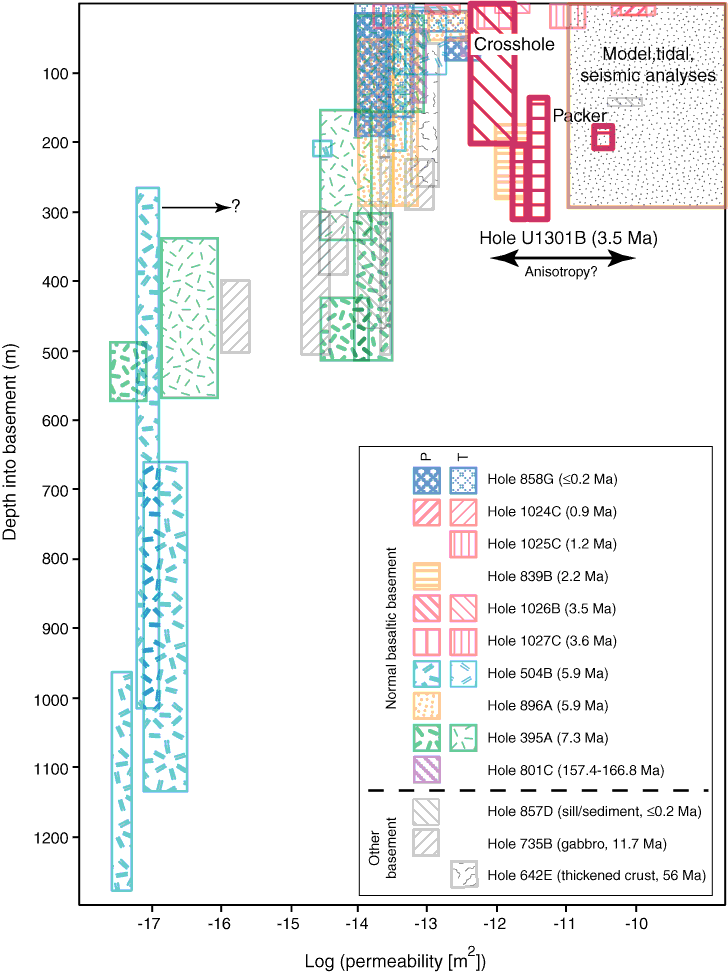
Figure F6. Comparison between near-borehole permeabilities calculated from packer experiments in Hole U1301B (thick, horizontal red bands), those determined in other basement holes from packer (P) and single-hole thermal (flow) (T) experiments, and results of the crosshole experiment (thick, angled red bands). Multiple values and depth intervals shown for packer experiments indicate values calculated based on different thicknesses of tested intervals (Becker and Fisher, 2008). Hole U1301B packer permeabilities are 1–2 orders of magnitude higher than seen at comparable depths at most other sites, except for Hole 839B in the Lau Basin (Bruns and Lavoie, 1994). Hole U1301B packer data indicate higher permeabilities than detected with similar tests shallower in the crust in nearby Holes 1026B and 1027C. The difference between permeability estimated from the crosshole response in Hole 1027C from flow into Hole U1301B and that from packer testing in Hole U1301B might be explained by anisotropy in permeability (and transmissivity) in this area (Fisher et al., 2008). This may also help to explain why permeability estimated from the crosshole experiment is several orders of magnitude lower than that inferred, at a similar crustal scale, based on pressure responses to tidal and tectonic perturbations.

Previous | Close | Top of page